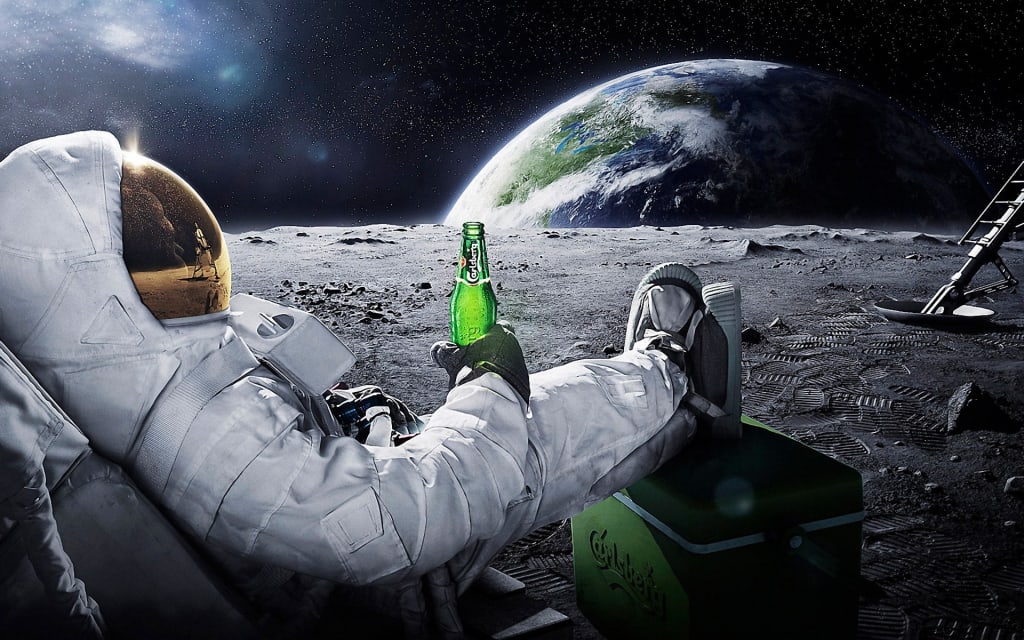Commercial spaceflight companies making space tourism accessible to the public
Space Tourism

The vastness of space has always captivated human imagination, and for centuries, space exploration remained the domain of a select few astronauts representing the pinnacle of human achievement. However, the 21st century has witnessed a paradigm shift, with commercial spaceflight companies pioneering the democratization of space travel. Space tourism, once a distant dream, is now becoming a reality as innovative companies open doors to a new era of human adventure and exploration.
The inception of commercial spaceflight marked a significant turning point in space exploration history. Traditionally, space missions were solely the domain of government space agencies like NASA, Roscosmos, and ESA. However, private companies such as SpaceX, Blue Origin, Virgin Galactic, and others have stepped onto the cosmic stage, challenging conventional notions of space travel.
Elon Musk's SpaceX has been a trailblazer in the commercial space industry, successfully launching numerous missions, including crewed missions to the International Space Station (ISS). Jeff Bezos' Blue Origin, on the other hand, is focused on suborbital space tourism and aims to offer awe-inspiring experiences of weightlessness and breathtaking views of Earth from space. Virgin Galactic, founded by Sir Richard Branson, is another prominent player in the space tourism arena, offering suborbital flights designed to make space accessible to civilians.
The emergence of commercial spaceflight holds the promise of making space travel more accessible and affordable to the general public. Space tourism not only fulfills the dreams of adventure-seekers and space enthusiasts but also has the potential to transform our understanding of space and its commercial applications.
Adventure of a Lifetime: For those with the means and a passion for exploration, space tourism offers the chance to venture beyond Earth's boundaries, experiencing the thrill of spaceflight and floating in microgravity.
Expanding Human Presence in Space: As space tourism becomes more mainstream, it can pave the way for an increase in human presence in space, leading to permanent space settlements and the eventual colonization of other celestial bodies.
Technological Advancements: The development of space tourism has spurred advancements in aerospace technology, making space travel safer and more reliable.
Educational and Inspirational Impact: Space tourism can inspire the younger generation to pursue careers in science, technology, engineering, and mathematics (STEM), encouraging the next generation of space explorers.
Revolutionizing Satellite Deployment: Reusable rocket technology developed for space tourism missions has the potential to significantly reduce the cost and environmental impact of launching satellites into orbit, benefiting communication, weather forecasting, and scientific research.
Despite the immense promise of space tourism, there are significant challenges and safety concerns that must be addressed before it can become a mainstream industry.
Safety and Reliability: The safety of space tourists is of paramount importance. Ensuring reliable spacecraft and conducting rigorous training for passengers are critical steps in mitigating risks.
Environmental Impact: The increased frequency of space launches raises concerns about the environmental impact of rocket emissions on Earth's atmosphere.
Space Debris: The growing number of space launches and satellites increases the risk of space debris, which poses a threat to both space tourists and other spacecraft.
Regulatory Frameworks: The development of commercial spaceflight requires robust regulatory frameworks to ensure safety, fair competition, and adherence to international space laws.
A typical space tourism journey comprises several phases, each contributing to the overall experience:
Preparation and Training: Space tourists undergo comprehensive training, which includes familiarization with spacecraft systems, emergency procedures, and experiencing microgravity during parabolic flights.
Liftoff and Ascent: The moment of liftoff is an exhilarating experience as the spacecraft propels upwards, breaking through Earth's atmosphere.
Microgravity Experience: During the weightless phase, space tourists can float freely inside the spacecraft, experiencing the sensation of living in space.
Views of Earth: At the apex of the journey, space tourists can behold the awe-inspiring sight of our planet from space, witnessing the curvature of the Earth and the vastness of space.
Reentry and Return: After a short but transformative time in space, the spacecraft reenters Earth's atmosphere, culminating in a gentle landing back on the surface.
The future of space tourism is promising, with ongoing research, technological advancements, and the growing interest of private investors fueling its growth. In the coming years, we can expect to see:
Reduced Costs: As technology improves and space tourism becomes more routine, the costs of space travel are likely to decrease, opening the doors to a broader segment of the population.
Orbital and Lunar Tourism: Companies like SpaceX have plans to offer orbital and lunar tourism, enabling space tourists to journey beyond suborbital flights and orbit the Earth or even visit the Moon.
Space Hotels and Habitats: In the long term, the construction of space hotels and habitats could allow for extended stays in space, enabling tourists to live and work in orbit.
Scientific Research: Space tourism missions could be combined with scientific research, allowing private citizens to contribute to important space experiments and observations.
Space tourism represents a thrilling leap into the cosmos, making the once-unattainable dream of space travel accessible to the adventurous souls of our time. The emergence of commercial spaceflight companies has sparked innovation, technological advancement, and a renewed interest in space exploration.
While challenges and safety concerns must be addressed, the potential benefits of space tourism are vast – from inspiring future generations of explorers to advancing scientific research and expanding human presence in space.
As space tourism continues to develop, it holds the promise of not only enriching the lives of those fortunate enough to embark on these cosmic adventures but also transforming our collective understanding of the universe and our place within it.
About the Creator
Reynol Brennan
A small blogger who shares emotions, life, life insights, and short stories, and provides everyone with happiness, growth, and common sense of life.
Enjoyed the story? Support the Creator.
Subscribe for free to receive all their stories in your feed. You could also pledge your support or give them a one-off tip, letting them know you appreciate their work.






Comments
There are no comments for this story
Be the first to respond and start the conversation.